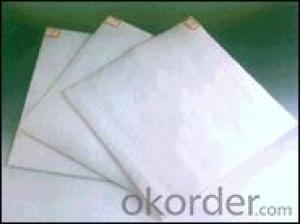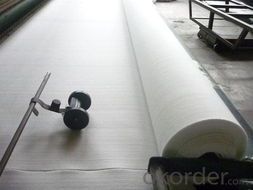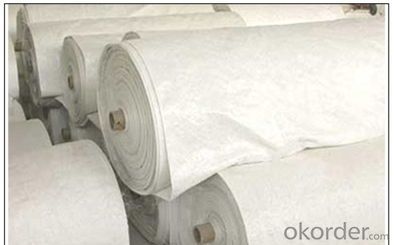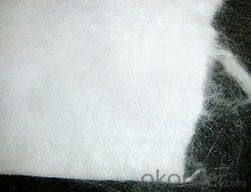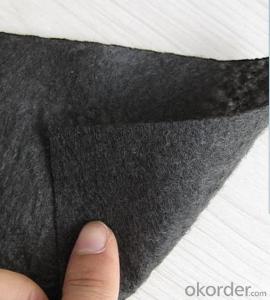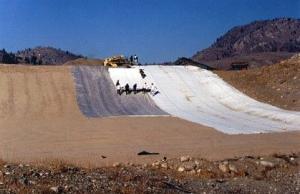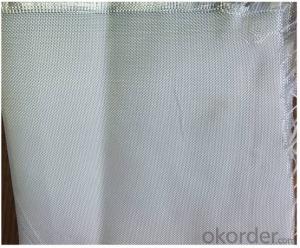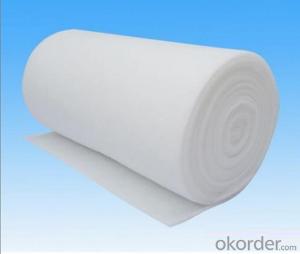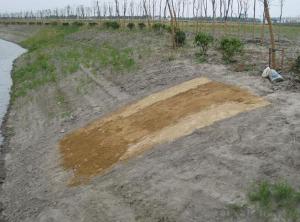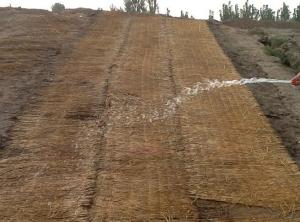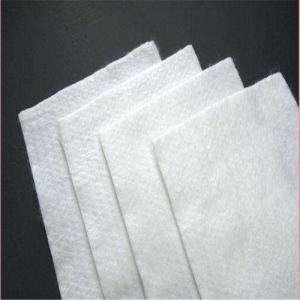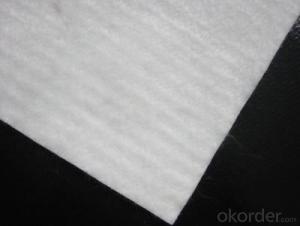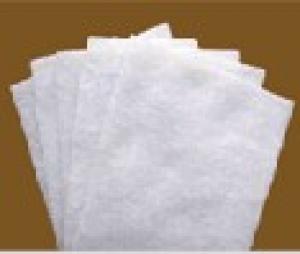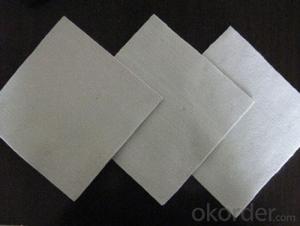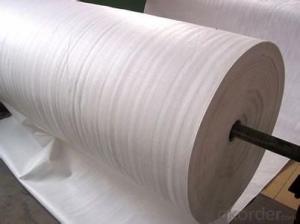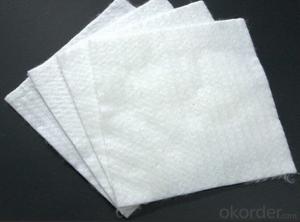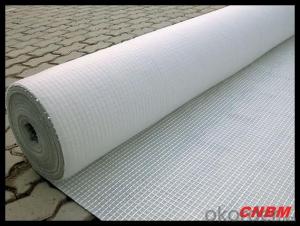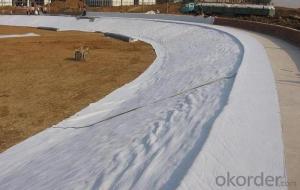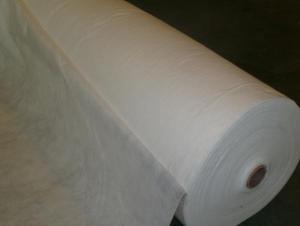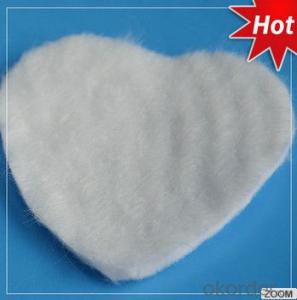Geotextil Para Que Sirve:Polypropylene Staple Fiber Needle Punched Geotextile
- Loading Port:
- Qingdao
- Payment Terms:
- TT OR LC
- Min Order Qty:
- 1 m²
- Supply Capability:
- 1000000 m²/month
OKorder Service Pledge
OKorder Financial Service
You Might Also Like
Products overview:
Polypropylene staple fiber needle-punched nonwoven geotextile is with high quality polypropylene short fiber as raw material, through carding web acupuncture. Single side or double side hot rolling also can according to requirements.
Performance characteristics:
Flexibility feld, acid and alkali resistance, corrosion resistance, aging resistance, high strength, size stability, soil can enhance the ability of resistance to deformation and the tensile strength, to improve the stability of the building structure, to improve the quality of soil, polypropylene staple fiber nonwoven fabric also has good air permeability and water permeability, make the water flow through, effectively intercept sand erosion, filter, isolation performance, can prevent the lower sandstone, mixed between soil and concrete, construction is convenient, etc.
Purpose:
1, staple fiber geotextile acupuncture can be used in water conservancy project: standard seawall, consideration, the river, the lake engineering; Reservoir reinforcement project; Wai tu reclamation engineering; Flood control and emergency rescue.
2, staple fiber geotextile acupuncture can be used to power plant engineering: plant engineering; Coal ash dam engineering; Hydropower station.
3, staple fiber geotextile acupuncture can be used for highway railway airport project; Soft ground reinforcement; Slope protection; Pavement reflection; Cracks and structure layer; Drainage system; Green barriers.
4, staple fiber geotextile acupuncture can be used in harbor engineering, port wharf engineering; Lock engineering; Channel regulation project.
Product specifications:
2 to 7 m, width:
G: 100 g - 800 - g/m2.
- Q: How do geotextiles aid in the reduction of liquefaction?
- Geotextiles aid in the reduction of liquefaction by providing reinforcement and stabilization to the soil. These synthetic fabrics are installed beneath the surface to improve the soil's strength and prevent its excessive movement during seismic activity. By increasing the soil's resistance to liquefaction, geotextiles help to mitigate the potential damage and hazards caused by this phenomenon.
- Q: How do geotextiles help with erosion control in river channels?
- Geotextiles help with erosion control in river channels by providing a physical barrier that stabilizes the soil and prevents it from being washed away by flowing water. They also promote vegetation growth by allowing water to permeate while filtering out sediment, ultimately protecting the riverbanks from erosion.
- Q: Can concrete slabs be placed directly on geotextiles?
- The best pad gravel, professional geotextile manufacturers to answer,
- Q: Where is the geotextile in the municipal works?
- Conservation, consideration, there is more green and more Chinese geotextile material manufacturers
- Q: Performance and Application of Impervious Geotextile
- Anti-seepage geotextile has excellent water permeability, filterability, durability, can be widely used in railways, highways, sports museum, dams, hydraulic construction, then hole, coastal beach, reclamation, environmental protection and other projects. Mainly staple acupuncture non-woven geotextile and split film woven geotextile. Anti-seepage geotextile function: 1. The use of geotextiles good permeability and water permeability, so that water through, so as to effectively remove the loss of sand. 2. Geotextile has a good water conductivity, it can form a drainage channel within the soil, the soil structure of the excess liquid and gas efflux. 3. Using geotextile to enhance the soil tensile strength and resistance to deformation, enhance the stability of the building structure to improve the quality of soil. 4. Effective focus will be concentrated diffusion, transmission or decomposition, to prevent soil damage by external forces. 5. to prevent the upper and lower gravel, soil and concrete mixed between. 6. Mesh is not easy to plug - due to the formation of amorphous fibrous tissue structure and strain and mobility. 7. High permeability - under the pressure of soil water, can still maintain a good permeability 8. Corrosion resistance - to polypropylene or polyester and other chemical fiber as raw materials, acid and alkali, no corrosion, no moth, antioxidant. 9. Construction is simple - light weight, easy to use, simple construction. Anti-seepage geotextile characteristics High anti-puncture strength, large coefficient of resistance to aging performance, to adapt to the environmental temperature range Excellent excellent anti-drainage performance for water conservancy, chemical, construction, transportation, subway, tunnel, garbage disposal and other projects
- Q: What are the cost implications of using geotextiles?
- The cost implications of using geotextiles can vary depending on factors such as the type and quality of the geotextile, the size of the project, and the specific application. In general, geotextiles can add an additional cost to a project, as they need to be purchased and installed. However, they can also provide cost savings in the long run by reducing the need for expensive soil stabilization measures, increasing the lifespan of structures, and minimizing maintenance and repair costs. Additionally, geotextiles can provide cost-effective solutions for erosion control, slope stabilization, and drainage, which can help prevent costly damages and disruptions.
- Q: Filament geotextile in the storage should pay attention to what matters
- Do not explode, or do not store in a dark, wet place, avoid rain
- Q: Can geotextiles be used in golf course construction?
- Yes, geotextiles can be used in golf course construction. Geotextiles are commonly used in various applications in golf course construction, such as stabilizing soil, preventing erosion, and improving drainage. They can help enhance the performance and longevity of golf course infrastructure, such as greens, tees, bunkers, and fairways.
- Q: 250 grams of two cloth a film 0.8 thick geotextile what price
- 250 grams of two cloth a film 0.8 thick geotextile per square meter between about 10 yuan -13 yuan, the current price is the lowest in recent years.
- Q: Are geotextiles suitable for use in reservoir lining?
- Yes, geotextiles are suitable for use in reservoir lining. They are commonly used to prevent soil erosion and provide stability in various civil engineering applications, including lining reservoirs. Geotextiles can help to separate different soil layers, reinforce the reservoir lining, and enhance its overall integrity and durability. Additionally, they can provide filtration and drainage properties, which can be beneficial in reservoir construction and maintenance.
Send your message to us
Geotextil Para Que Sirve:Polypropylene Staple Fiber Needle Punched Geotextile
- Loading Port:
- Qingdao
- Payment Terms:
- TT OR LC
- Min Order Qty:
- 1 m²
- Supply Capability:
- 1000000 m²/month
OKorder Service Pledge
OKorder Financial Service
Similar products
Hot products
Hot Searches
Related keywords
